Address
304 North Cardinal
St. Dorchester Center, MA 02124
Work Hours
Monday to Friday: 7AM - 7PM
Weekend: 10AM - 5PM
Address
304 North Cardinal
St. Dorchester Center, MA 02124
Work Hours
Monday to Friday: 7AM - 7PM
Weekend: 10AM - 5PM
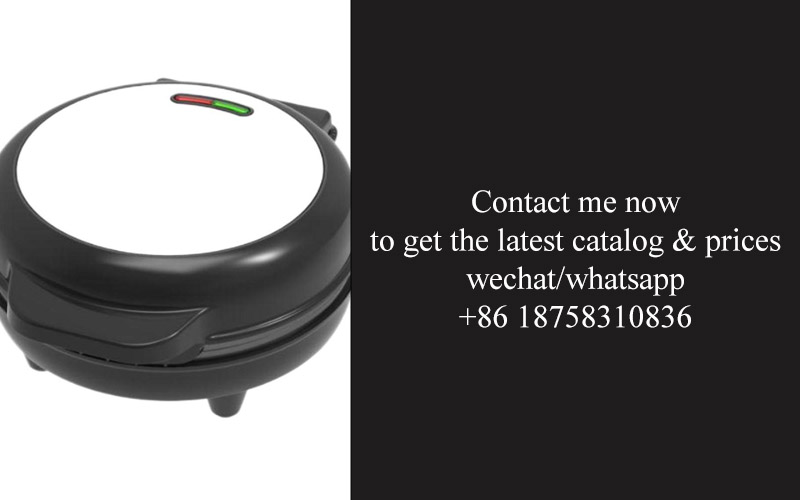
In a world where consumer demands are ever-evolving, the landscape of private label kitchen appliance packaging is undergoing a transformative shift. It’s not just about protecting the product—it’s about telling a story, engaging the consumer, and setting a brand apart. Let’s delve into the intricate world of packaging design for private label kitchen appliances, where every detail counts and innovation is key.
In recent years, the kitchen appliance industry has witnessed a significant shift with the emergence of private label brands. These brands, often under the radar of major players, have been quietly gaining traction and reshaping the market landscape. This surge in popularity isn’t just a trend; it’s a game-changer that’s reshaping consumer expectations and the way we perceive kitchen appliances.
Private label brands, which include store-branded and own-label products, are now a staple in many retail stores. They offer consumers a more affordable alternative to high-end, name-brand appliances. This accessibility has opened up the market to a wider audience, including budget-conscious shoppers who are looking for quality without the premium price tag.
The appeal of private label kitchen appliances lies in their competitive pricing. These brands often leverage economies of scale to produce appliances at a lower cost, allowing them to offer more affordable options to consumers. This has been particularly beneficial during economic downturns when consumers are more sensitive to their spending.
Moreover, private label brands have been quick to adapt to changing consumer preferences. They are often more agile and responsive to market trends, allowing them to introduce new products and features that resonate with customers. This agility has given them a competitive edge, as they can capitalize on emerging needs and desires more swiftly than established brands.
The packaging of private label kitchen appliances plays a crucial role in their success. It’s not just about protecting the product during transit; it’s about creating an impression that resonates with the consumer. Innovative packaging designs have become a key differentiator for these brands, helping them stand out on the shelves.
One of the standout features of private label packaging is its simplicity and functionality. Many private label brands have embraced minimalistic designs that focus on clean lines and straightforward messaging. This approach not only enhances the aesthetic appeal but also communicates a sense of reliability and trustworthiness to the consumer.
Another important aspect of private label packaging is its eco-friendliness. With growing environmental concerns, consumers are increasingly looking for sustainable products. Private label brands that use recycled materials or biodegradable packaging are not only appealing to eco-conscious shoppers but are also aligning with broader sustainability trends.
The use of technology in packaging has also become a significant trend. QR codes and augmented reality (AR) have been integrated into packaging to provide consumers with additional information and interactive experiences. For example, a consumer might scan a QR code to see a demonstration of the appliance in action or to access customer reviews. This integration of technology not only adds value but also enhances the overall customer experience.
Despite the rise of private label brands, they still face challenges. One of the main hurdles is the perception that private label products are of lower quality compared to name brands. To combat this, private label brands have been investing in rigorous quality control processes and certifications to assure consumers of their products’ reliability.
Furthermore, private label brands must navigate the competitive landscape, where they often compete against well-established and well-known brands. They do this by focusing on niche markets and unique selling propositions (USPs) that set them apart. Whether it’s a specialized feature or a particular design aesthetic, these brands are finding ways to carve out their own space in the market.
The rise of private label kitchen appliances is a testament to the changing dynamics of consumer behavior and the market’s response to those changes. As the market continues to evolve, we can expect to see even more innovation in packaging design, product features, and customer experience. The private label segment is not just a trend; it’s a new chapter in the story of kitchen appliances, one that promises to bring more choice and value to consumers worldwide.

Private label kitchen appliances have become a significant force in the market, reshaping the way consumers perceive and purchase home goods. Understanding the intricacies of private label kitchen appliance packaging is crucial for anyone looking to navigate this burgeoning sector.
Packaging for private label kitchen appliances refers to the protective covering that encases the products during transportation and storage. It’s not just a matter of keeping the appliance safe; it’s a canvas for brands to communicate their identity and values. Unlike branded appliances, which often come with a logo and a clear brand image, private label packaging must rely on design, color, and material to make a lasting impression.
The packaging design for private label kitchen appliances is a blend of functionality and aesthetics. It must be durable enough to withstand the rigors of shipping, but also attractive enough to catch the eye of consumers. This dual role is essential, as packaging is often the first point of contact between the product and the potential buyer. A sleek, modern design can evoke feelings of quality and innovation, while a simplistic approach might suggest affordability and reliability.
In terms of materials, private label packaging ranges from traditional cardboard boxes to more sustainable options like recycled paper, biodegradable plastics, and even compostable materials. The choice of material can significantly impact the perception of the brand and the appliance itself. For example, a brand opting for eco-friendly materials might appeal to environmentally conscious consumers, positioning the product as a more ethical and responsible choice.
Color plays a pivotal role in private label kitchen appliance packaging. The right color scheme can evoke specific emotions and convey the brand’s message. For instance, blues and greens often symbolize cleanliness and sustainability, while reds and oranges might suggest energy and power. The use of color can also help differentiate the product from competitors on the shelves, making it more noticeable and memorable.
Functionality is another critical aspect of private label kitchen appliance packaging. It needs to be easy to open and close, ensuring that the product is accessible to customers without causing damage. Packaging that includes handles or is designed for easy lifting can also improve the overall consumer experience. Additionally, some packaging includes features like anti-slip bases or protective corners that safeguard the appliance during transit.
Labels and branding elements are key components of private label kitchen appliance packaging. These labels provide essential information such as the product name, specifications, and usage instructions. However, they also offer an opportunity for branding. Private label brands often use clear, concise language to inform and persuade, while also incorporating visual elements that reinforce the brand identity.
One of the most compelling reasons why understanding private label kitchen appliance packaging matters is its impact on consumer perception. Packaging is the first thing a consumer sees, and it can create a lasting impression. A well-designed package can make a private label appliance feel premium, which is particularly important when competing against well-known brand names. This perception can translate into higher sales and a stronger market position for private label brands.
Moreover, packaging can influence the way consumers interact with the appliance post-purchase. Packaging that doubles as a storage solution or a convenient way to display the appliance can enhance the overall ownership experience. For example, some packaging includes modular designs that allow the appliance to be showcased in different configurations, appealing to those who value versatility and aesthetics.
In recent years, there has been a growing trend towards transparent and honest packaging. Consumers are increasingly interested in knowing where their products come from and how they are made. Private label kitchen appliance packaging that offers a glimpse into the brand’s story or manufacturing process can build trust and loyalty. This approach can also help differentiate private label brands from mass-produced competitors.
Lastly, the role of technology in private label kitchen appliance packaging cannot be overlooked. Advances in digital printing and customization have allowed brands to create unique and personalized packaging solutions. This technology can be used to include variable data, such as the appliance’s serial number or manufacturing date, which can enhance the customer experience and provide a sense of exclusivity.
In summary, private label kitchen appliance packaging is more than just a protective layer; it’s a strategic tool that can influence consumer perception, brand image, and overall sales success. By understanding the nuances of packaging design, materials, and branding, private label brands can create a compelling product that stands out in a crowded market. As the private label sector continues to grow, the importance of thoughtful and effective packaging will only increase.
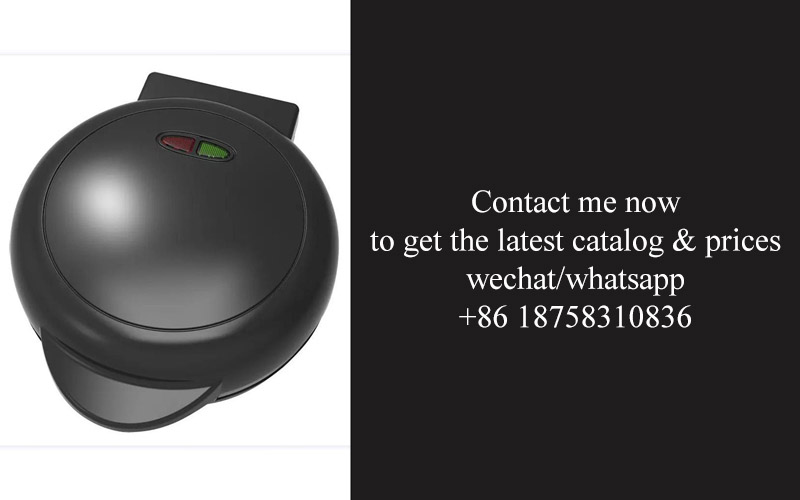
In the ever-evolving landscape of kitchen appliances, private label brands are carving out a niche with their unique approach to design. These brands, often associated with major retailers, are not just about affordability; they’re about innovation and a fresh perspective that resonates with modern consumers. Here’s a delve into the innovative designs that are setting private label kitchen appliances apart.
The integration of smart technology into private label appliances has been a game-changer. From refrigerators that can track your grocery needs to ovens that offer precise cooking temperature control, these devices are not just kitchen tools but smart companions. The design of these smart appliances often features a sleek, minimalist look with an emphasis on user-friendliness, ensuring that even the most technologically challenged individuals can enjoy the benefits of smart living.
Another innovative aspect is the focus on modular designs. Private label brands are creating appliances that can be easily customized or upgraded. For instance, a modular oven might allow users to swap out the oven rack for a convection fan or a rotisserie attachment, providing versatility that traditional ovens lack. This approach not only caters to the varying needs of consumers but also extends the lifespan of the appliance.
Eco-consciousness is at the forefront of many private label kitchen appliance designs. Brands are increasingly using recycled materials for their packaging and choosing to produce appliances with a smaller carbon footprint. The design reflects this commitment, with energy-efficient models that not only save money on utility bills but also contribute to a greener planet. The aesthetics of these eco-friendly appliances are often understated, focusing on functionality and durability.
Color and finish options are also a significant part of the innovation in private label kitchen appliances. Traditionally, appliances came in a limited range of colors, usually white or black. However, private label brands are now offering a variety of finishes, from stainless steel to matte black to pastel shades. This allows consumers to match their kitchen appliances to their personal style and decor, creating a cohesive and visually appealing kitchen environment.
The user interface has seen a dramatic transformation, with many private label appliances now featuring touchscreens and intuitive interfaces. This shift moves away from the traditional mechanical controls and dials, making appliances more appealing to tech-savvy consumers who appreciate the simplicity and elegance of a digital display. The design of these interfaces is not just about looks; it’s about making the appliance more accessible and efficient.
Accessibility is another key design consideration for private label kitchen appliances. Brands are recognizing the importance of inclusive design and are creating appliances that are easy to use for people of all abilities. Features like easy-to-clean surfaces, ergonomically designed handles, and controls that are easy to reach and operate are becoming standard. This approach not only makes the kitchen a more user-friendly space but also opens up the market to a wider range of consumers.
Safety is a paramount concern in the design of kitchen appliances, and private label brands are not shying away from innovation in this area. From anti-slip bases to child locks on ovens and stovetops, these appliances are designed with safety in mind. The design of these safety features is often seamless, blending into the overall aesthetic without compromising on functionality.
The rise of the kitchen as a social hub has also influenced the design of private label appliances. Appliances with larger viewing windows, such as ranges with glass fronts, allow for a better view of the cooking process, making the kitchen a more inviting space for family and friends. The design of these appliances often includes stylish handles and decorative elements that add a touch of elegance to the cooking area.
In the realm of cleaning and maintenance, private label brands are pushing the boundaries with innovative designs. Self-cleaning ovens, touchless faucets for sinks, and removable, dishwasher-safe parts are just a few examples of how these brands are making kitchen chores easier and more pleasant. The design of these features is thoughtful, focusing on the convenience and time-saving aspects of modern living.
Finally, the sustainability movement has influenced the design of private label kitchen appliances in profound ways. Brands are now considering the entire lifecycle of the product, from design to disposal. This includes the use of sustainable materials, the elimination of single-use plastics in packaging, and the creation of appliances that can be recycled or repurposed at the end of their life. The design reflects a commitment to the planet, offering consumers a choice that aligns with their values.
In summary, the innovative designs of private label kitchen appliances are reshaping the market, offering consumers a blend of affordability, technology, and sustainability. These designs are not just about the appliances themselves but about the entire kitchen experience, making cooking and entertaining more enjoyable and efficient.
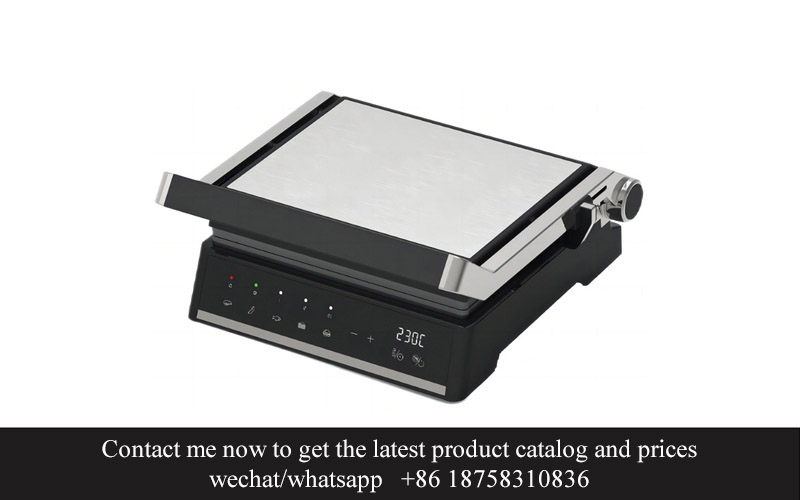
Private label kitchen appliance packaging plays a pivotal role in the success of these products. It’s not just about protecting the product during shipping; it’s a canvas for brands to communicate their identity, values, and the unique selling points of their appliances. Let’s delve into how packaging contributes to the triumph of private label brands.
Packaging serves as the first impression for many consumers. It’s the first thing they see when browsing through a store or online. A sleek, attractive design can pique interest and draw shoppers in. Private label brands often leverage this opportunity to stand out from the sea of branded appliances. By crafting packaging that reflects their brand image, they create a sense of familiarity and trust with the consumer.
Functionality is another key aspect of packaging. It must be durable enough to withstand the rigors of transportation while also being easy to open and use. Private label brands often focus on eco-friendly materials, like recycled paper or biodegradable plastics, to appeal to environmentally conscious consumers. This not only aligns with current market trends but also showcases the brand’s commitment to sustainability.
Visual storytelling is a powerful tool in packaging design. Brands can use imagery and graphics to convey the benefits and features of their appliances. For instance, a blender packaging might feature vibrant photos of smoothies and juices, immediately communicating the product’s purpose. This approach not only educates the consumer but also inspires them to use the appliance in creative ways.
The size and shape of packaging can also impact consumer perception. Compact and space-saving designs can be particularly appealing to urban dwellers or those with limited storage. Private label brands that cater to these demographics often design packaging that is not only visually appealing but also practical for their target market.
Packaging serves as a silent salesperson, providing essential information about the product. Clear and concise product descriptions, specifications, and warranty details are crucial for building consumer confidence. Private label brands often go the extra mile by including user manuals or quick-start guides within the packaging, ensuring that customers can start enjoying their new appliance right away.
In the age of social media and online reviews, packaging can be a source of brand advocacy. A distinctive and memorable design can be shared on platforms like Instagram or Pinterest, generating buzz and free advertising. Consumers are more likely to recommend a product if they find its packaging aesthetically pleasing and functional.
Brands also use packaging to differentiate their products from competitors. By incorporating unique features, such as QR codes that link to videos or recipes, or augmented reality experiences, private label brands can create an interactive and engaging packaging that sets them apart. These added-value elements not only enhance the customer experience but also encourage repeat purchases.
Another important aspect of packaging is its role in protecting the product. Private label brands invest in high-quality packaging that minimizes the risk of damage during shipping. This is especially crucial for delicate kitchen appliances like glassware or electronic devices. By ensuring that the product arrives in perfect condition, brands can foster customer satisfaction and loyalty.
Lastly, packaging is a reflection of the brand’s values and ethos. Private label brands that prioritize ethical sourcing or community involvement often highlight these aspects on their packaging. This transparency builds trust with consumers who are increasingly seeking out brands that align with their personal values.
In conclusion, the role of packaging in private label success cannot be overstated. It’s not just a means to protect the product, but a strategic tool that can influence consumer perception, build brand loyalty, and drive sales. By focusing on design, functionality, sustainability, and brand storytelling, private label kitchen appliance brands can create packaging that truly stands out in the market.
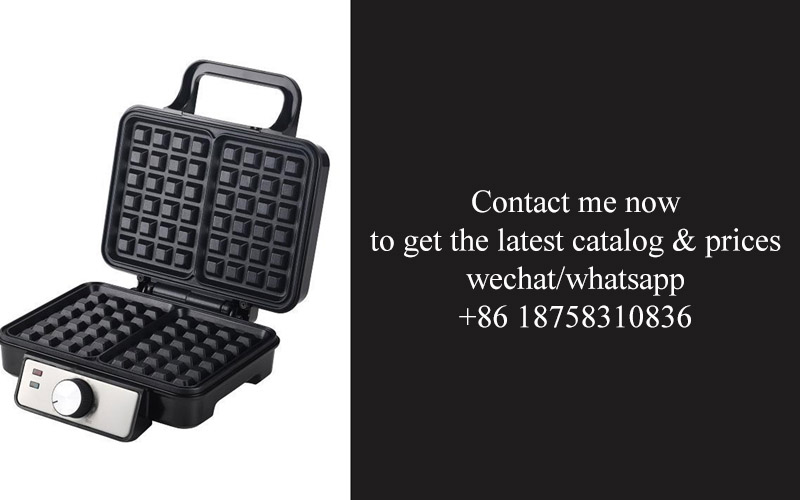
In the ever-evolving landscape of kitchen appliance packaging, understanding market trends and consumer preferences is paramount. These factors not only influence the design and materials used but also play a crucial role in the success of private label brands. Let’s delve into the nuances of this dynamic interplay.
Packaging is no longer just a protective barrier; it’s a silent salesperson, conveying a brand’s values and appealing to the end-user’s sensibilities. With the rise of eco-conscious consumers, sustainable materials have become a key consideration. Biodegradable plastics, recycled cardboard, and compostable films are now common choices, reflecting a commitment to environmental responsibility.
The visual appeal of packaging is equally important. A sleek, modern design can instantly attract attention on the shelf, while vibrant colors and eye-catching graphics can evoke a sense of excitement and curiosity. However, it’s not just about looking good; the design must also communicate the product’s features and benefits clearly. Infographics, icons, and concise product descriptions are all tools in the designer’s arsenal to achieve this.
Functionality is another critical aspect. Packaging must not only protect the appliance during transit but also facilitate easy assembly and usage. For instance, modular packaging that allows for flat-packaging to save space is a practical solution that also reduces waste. Additionally, packaging that doubles as a tool, like a built-in cutting board or a wall mount for small appliances, adds value and enhances the customer experience.
In recent years, there has been a significant shift towards digital integration in packaging design. QR codes and augmented reality (AR) experiences are becoming more prevalent, offering consumers a direct line to product information, tutorials, and customer support. This digital layer adds depth to the packaging, providing a more engaging and interactive shopping experience.
Consumer preferences are also shifting towards personalized and customizable packaging. With the rise of subscription boxes and online marketplaces, customers are increasingly looking for products that cater to their specific needs and tastes. This has led to a trend of packaging that can be personalized with names, messages, or even custom designs, creating a sense of exclusivity and connection with the brand.
The importance of cultural nuances cannot be overstated. Packaging that resonates with local customs and traditions can significantly boost sales. For example, in some markets, incorporating symbols or colors that are associated with prosperity and happiness can create a stronger emotional connection with the consumer.
In the realm of sustainability, packaging is at the forefront of innovation. Brands are exploring innovative uses for leftover materials from other industries, such as using rice husks for insulation or mushroom roots for packaging. These eco-friendly solutions not only reduce waste but also offer a unique selling point that can differentiate a private label brand from its competitors.
Another trend is the emphasis on transparency. Consumers are more likely to purchase products from brands that are open about their ingredients, manufacturing processes, and sourcing practices. Packaging that highlights these aspects can build trust and loyalty.
Lastly, the rise of social media has had a profound impact on packaging design. Brands are now designing packaging that is not only visually appealing but also shareable. This means incorporating elements that are likely to be photographed and shared online, such as unique shapes, vibrant colors, or quirky designs.
In conclusion, the role of packaging in private label success is multifaceted. It must be visually engaging, functional, sustainable, and culturally relevant. By staying attuned to market trends and consumer preferences, brands can create packaging that not only protects their products but also tells a compelling story and fosters a lasting relationship with the consumer.
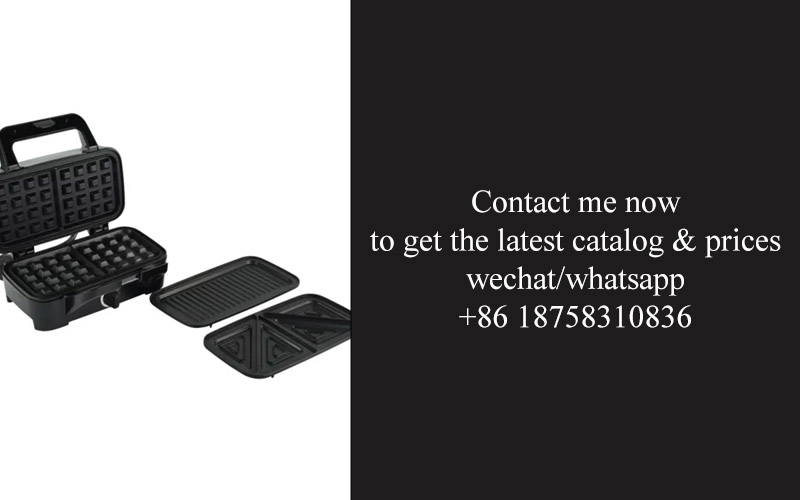
In the competitive landscape of private label kitchen appliance packaging, several brands have managed to stand out with their innovative and effective strategies. Let’s delve into some notable case studies that showcase successful examples of packaging design in this sector.
Breville’s Smart Packaging for Health-Conscious Consumers: Breville has crafted packaging that caters to the health-conscious consumer market. Their sleek, eco-friendly boxes not only emphasize the appliance’s health benefits but also provide a clear view of the product. The use of recycled materials and minimalistic design has resonated with consumers looking for sustainable and aesthetically pleasing packaging.
Dyson’s Interactive Packaging Experience: Dyson has revolutionized the packaging experience with its interactive approach. By incorporating digital elements into the packaging design, such as QR codes that link to videos or product demonstrations, Dyson engages customers from the moment they open the box. This interactive experience not only educates consumers about the product but also enhances brand loyalty.
KitchenAid’s Emotional Connection through Packaging: KitchenAid has long been known for its iconic stand mixers, and their packaging design reflects the emotional connection they aim to build with consumers. The vibrant colors and vintage-inspired illustrations evoke nostalgia and a sense of home. This emotional appeal is further reinforced by the packaging’s premium feel, which suggests a high-quality product.
Miele’s Minimalist and Functional Packaging: Miele, a brand synonymous with luxury and quality, showcases its commitment to simplicity in packaging design. Their boxes are understated, featuring a minimalist color scheme and clear typography. This functional approach focuses on the product itself, allowing the appliance’s design to speak for itself, which is particularly appealing to consumers who appreciate a clutter-free unboxing experience.
Bosch’s Smart Storage Solutions: Bosch’s packaging design goes beyond aesthetics to address practicality. They have developed innovative packaging that allows for efficient storage, making it easier for customers to transport and store their new appliances. This thoughtful approach has been well-received by consumers who value ease and convenience in their purchasing process.
Cuisinart’s Customization and Personalization: Cuisinart has taken customization to a new level with their packaging. By offering a range of color options and personalization kits, customers can choose a package that reflects their personal style. This level of personalization not only adds a touch of luxury but also fosters a stronger emotional bond between the consumer and the brand.
T-Fal’s Multilingual Packaging for Global Appeal: T-Fal’s packaging design is a testament to their global appeal. Their boxes are available in multiple languages, catering to an international customer base. This inclusive approach ensures that every consumer can easily understand the product features and benefits, making T-Fal’s appliances accessible to a wider audience.
Hamilton Beach’s User-Friendly Packaging: Hamilton Beach has made a name for itself with user-friendly packaging that simplifies the unboxing process. Their clear, step-by-step instructions and easy-to-open boxes have been praised by consumers for reducing the stress of setting up new kitchen appliances.
These case studies highlight the importance of packaging design in private label kitchen appliances. By focusing on customer needs, brand values, and innovative approaches, these brands have managed to create packaging that not only protects their products but also fosters a positive and memorable consumer experience.
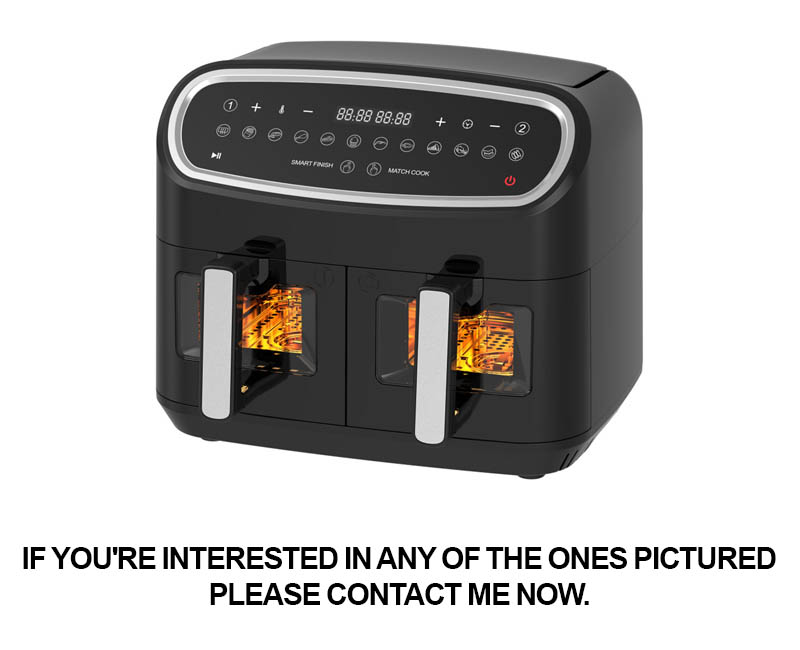
In the realm of private label kitchen appliance packaging, sustainability has emerged as a pivotal factor that shapes consumer perception and brand loyalty. As eco-consciousness grows, so does the demand for packaging that reflects a commitment to the environment. Let’s delve into how sustainability is becoming the new standard in the industry.
The Shift Towards Eco-MaterialsTraditional packaging materials like plastic have long been the norm, but the tide is turning. Brands are now seeking alternatives that are not only functional but also environmentally friendly. Biodegradable plastics, recycled paper, and plant-based materials like bamboo and sugarcane are becoming popular choices. These materials not only reduce the carbon footprint but also offer a unique aesthetic that appeals to environmentally conscious consumers.
Designing for DisposalPackaging design is evolving to facilitate easier disposal. Companies are focusing on packaging that can be easily recycled or composted, ensuring that the end of the product’s life cycle is less harmful to the environment. Features like easy-tear notches, minimal adhesive, and clear instructions for recycling are becoming standard, making it simpler for consumers to dispose of their appliances responsibly.
The Impact of Color and AestheticsSustainability isn’t just about the materials used; it’s also about how the product is perceived. Eco-friendly packaging often incorporates natural colors and earth tones, which resonate with consumers looking for a more organic look. The use of vibrant green, blue, or brown hues can communicate the brand’s commitment to sustainability, while also standing out on store shelves.
Branding and StorytellingSustainability has become a key part of branding for private label kitchen appliances. Companies are using packaging to tell a story about their eco-friendly practices, from sourcing to manufacturing. Labels that highlight certifications, such as the Forest Stewardship Council (FSC) or the Blue Angel, can build trust and credibility. Packaging that tells a story of the brand’s journey towards sustainability can create a deeper emotional connection with the consumer.
Consumer Behavior and Market TrendsConsumers are increasingly seeking out products that align with their values, and private label kitchen appliances are no exception. The demand for sustainable packaging is driving innovation and change within the industry. Retailers and manufacturers are responding by offering more eco-friendly options, which in turn influences consumer behavior. A growing number of consumers are willing to pay a premium for products that are packaged sustainably, indicating a significant shift in market preferences.
Innovation in Packaging TechnologyTechnological advancements are enabling new ways to package private label kitchen appliances. For instance, the use of air pillows or expandable foam that can be easily compressed for shipping reduces the amount of material used and the carbon footprint associated with transportation. Additionally, advancements in 3D printing are allowing for customized packaging solutions that are not only sustainable but also cost-effective.
Challenges and SolutionsDespite the progress, there are challenges to widespread adoption of sustainable packaging. One major challenge is cost, as eco-friendly materials can be more expensive than traditional ones. However, many companies are finding cost-effective solutions by sourcing materials locally, optimizing supply chains, and scaling up production to reduce unit costs. Another challenge is ensuring that the packaging is as durable as it is eco-friendly, but innovations in material science are addressing this issue head-on.
Looking AheadThe push for sustainability in packaging is a testament to the evolving values of consumers and the industry as a whole. As more brands adopt eco-friendly practices, the standard for what is considered acceptable packaging will continue to rise. The industry is poised for a transformative period where innovation and sustainability go hand in hand, leading to a more sustainable future for private label kitchen appliances and the environment.
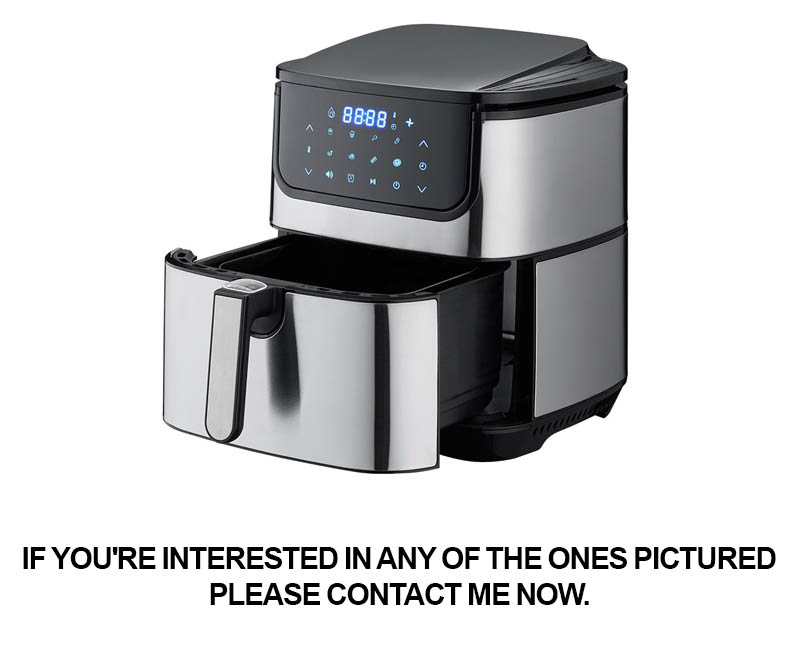
In today’s fast-paced world, sustainability has become a cornerstone of consumer choice, and this shift is profoundly impacting the private label kitchen appliance packaging industry. As brands strive to differentiate themselves and appeal to environmentally conscious consumers, the future of packaging in this sector is poised for significant changes. Here’s a glimpse into what we can expect:
1. A Shift Towards Biodegradable MaterialsThe demand for packaging that is kind to the environment is growing, and the industry is responding with innovative solutions. Expect to see a surge in the use of biodegradable materials such as compostable plastics, plant-based films, and recycled paper. These materials are not only sustainable but also help brands communicate their commitment to eco-friendliness.
2. Smart Packaging that Reduces WastePackaging that is smart and efficient in its design can significantly reduce waste. This includes packaging that can be easily recycled, repurposed, or even eaten. Think of packaging that can be transformed into a storage container or a plant pot after the product is used. Such innovative approaches not only reduce waste but also enhance the consumer experience.
3. Minimalist Aesthetics and FunctionalitiesMinimalism in packaging design is not just a trend; it’s a reflection of the consumer’s desire for simplicity and functionality. Expect to see sleek, uncluttered packaging that focuses on the product rather than excessive branding. This minimalist approach also tends to use less material, further contributing to sustainability efforts.
4. Integration of TechnologyTechnology is playing a pivotal role in shaping the future of packaging. Imagine a scenario where packaging not only protects the product but also provides real-time information about its usage and maintenance. Smart packaging, equipped with QR codes or RFID tags, can offer consumers valuable insights, enhancing their experience and brand loyalty.
5. Collaborations with Local Artists and CommunitiesBrands are increasingly looking to local artists and communities for inspiration in packaging design. This not only supports local economies but also adds a unique, culturally rich element to the packaging. Collaborations with artisans can lead to packaging that tells a story, fostering a deeper connection with consumers.
6. Enhanced Transparency and TraceabilityConsumers are more interested in knowing where their products come from and how they are made. Packaging that offers transparency and traceability, such as those with QR codes linking to the product’s journey from raw materials to shelf, is becoming more common. This not only builds trust but also allows consumers to make informed choices.
7. Customization and PersonalizationThe future of packaging may also include a level of customization and personalization that reflects the individual preferences of consumers. Imagine a kitchen appliance that comes in a variety of colors or finishes, allowing customers to choose a design that complements their kitchen decor. This level of personalization can also extend to packaging that is tailored to specific regional preferences or dietary needs.
8. A Focus on Emotional ConnectionPackaging that evokes an emotional response can be more effective in building brand loyalty. As consumers seek out products that resonate with their values, packaging that tells a story or reflects a brand’s mission can make a lasting impression. This emotional connection can be a powerful tool in the competitive landscape of private label kitchen appliances.
9. Regulatory Compliance and StandardsWith the rise of sustainability initiatives, regulatory bodies are setting new standards for packaging. Brands will need to ensure their packaging complies with these standards, which may include restrictions on certain materials or guidelines on labeling. Adhering to these regulations will be crucial for maintaining a competitive edge.
10. The Rise of Circular Economy ModelsThe concept of a circular economy, where products and materials are kept in use for as long as possible, is gaining traction. Packaging that is designed for reuse or recycling is not just a trend but a necessity. Expect to see more packaging that can be returned to the manufacturer or repurposed by the consumer, contributing to a more sustainable future.
In conclusion, the future of private label kitchen appliance packaging is about more than just protecting the product—it’s about creating a positive impact on the environment, fostering emotional connections with consumers, and staying ahead of regulatory changes. As the industry continues to evolve, the packaging of private label kitchen appliances will play a pivotal role in shaping the next generation of sustainable living.